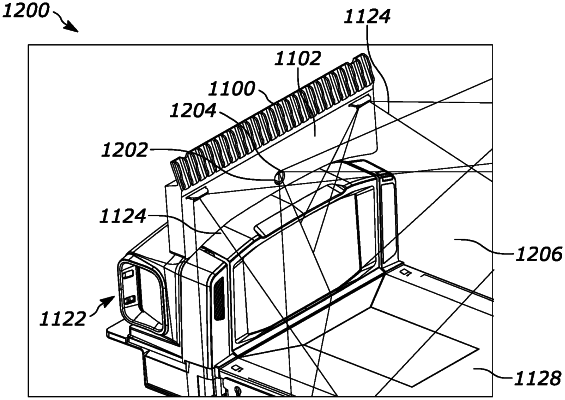| CPC G06K 7/12 (2013.01) [G06K 7/10198 (2013.01); G06K 7/10415 (2013.01); G06K 7/10821 (2013.01); G06K 7/14 (2013.01)] | 20 Claims |

|
16. A barcode reader comprising:
a housing;
an external-device-interface positioned at least partially within the housing;
a primary imaging assembly including one or more primary imagers positioned within the housing, the one or more primary imagers configured to capture a plurality of first images of an environment appearing within the FOV during a scanning session, wherein the scanning session includes one or more frames;
a primary illumination assembly positioned within the housing, wherein the primary illumination assembly is configured to provide a primary illumination to at least a portion of the environment; and
a controller operatively coupled to the primary imaging assembly, the primary illumination assembly, and the external-device-interface, the controller having a processor and a memory, the memory storing instructions that, when executed by the processor, cause the controller to:
(a) output (i) a primary-illumination-on signal and (ii) an image-capture signal, wherein the primary-illumination-on signal causes the primary illumination assembly to provide the primary illumination, and wherein the image-capture signal causes the primary imaging assembly to capture a respective first image of the plurality of first images;
(b) transmit, substantially concurrently with the transmission of the primary-illumination-on signal, an interleave signal to the external-device-interface, the interleave signal being operative to communicate, via the external-device-interface, at least one characteristic associated with at least one of the primary-illumination-on signal and the image-capture signal; and
(c) iteratively perform steps (a)-(c) for each respective frame of the scanning session.
|